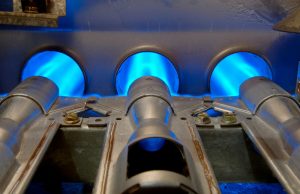Gas-powered furnaces can pose health hazards, but not at the level you may think. In general, conventional wisdom has far exaggerated the potential dangers of gas furnaces, which are no more a safety risk than other heating systems as long as they receive regular maintenance. If you take care of your gas furnace as you would any heating system in Tacoma, WA, you should encounter few problems with it, safety or otherwise. Look to Sunset Air for an excellent maintenance program for your furnace and air conditioner.
The reason that gas furnaces rarely create health hazards is because they have a number of special safety features installed in them that prevent gas leaks and the risk of explosions. Let’s go over a few of them:
Thermocouple
One of the potential problems a furnace could have is flooding of the combustion chamber with unburned gas. If the pilot light of a furnace goes out (not all furnaces have pilot lights, which is another safety feature), unburned gas from the burner can fill up the combustion chamber and pose the threat of an explosion from even a small spark. To prevent this, a device called a thermocouple registers the heat of the pilot light. An electric current runs through the thermocouple—two linked pieces of different metal—that increases with the temperature. When the pilot light goes out, the thermocouple’s voltage vanishes, which causes the gas valve to shut off, preventing any more burned gas from entering the chamber.
Mercury sensor
This device has started to replace the thermocouple as the method of determining if the pilot light is still on. A mercury flame sensor protruding into the pilot light drives up the mercury in the device, which makes an electrical connection that keeps the gas valve open. When the pilot goes out, the mercury falls, the connection fails, and the valve closes.
Furnace fan limit switch
This safety mechanism prevents the furnace from overheating. The switch is located beneath the plenum of the furnace and registers its temperature. When the temperature rises above a set level (which the owner can change), the limit switch shuts off the burner. As the temperature drops, the switch first turns off the blower at a lower level, increasing the speed of the temperature decline, and only when the temperature reaches the lowest setting does the switch reactivate the blower.
It’s important that all these safety mechanisms work the best they can, and that means regular maintenance. Technicians will find out when thermocouples or mercury sensors need replacement, and catch where the furnace might develop possible safety-threatening malfunctions. Sunset Air can help you repair and maintain your heating in Tacoma, WA so you’ll always have a safe and effective furnace working for you.
Continue Reading
Tags: Furnaces, Tacoma
Posted in Heating | Comments Off on Safety Features on Your Furnace





